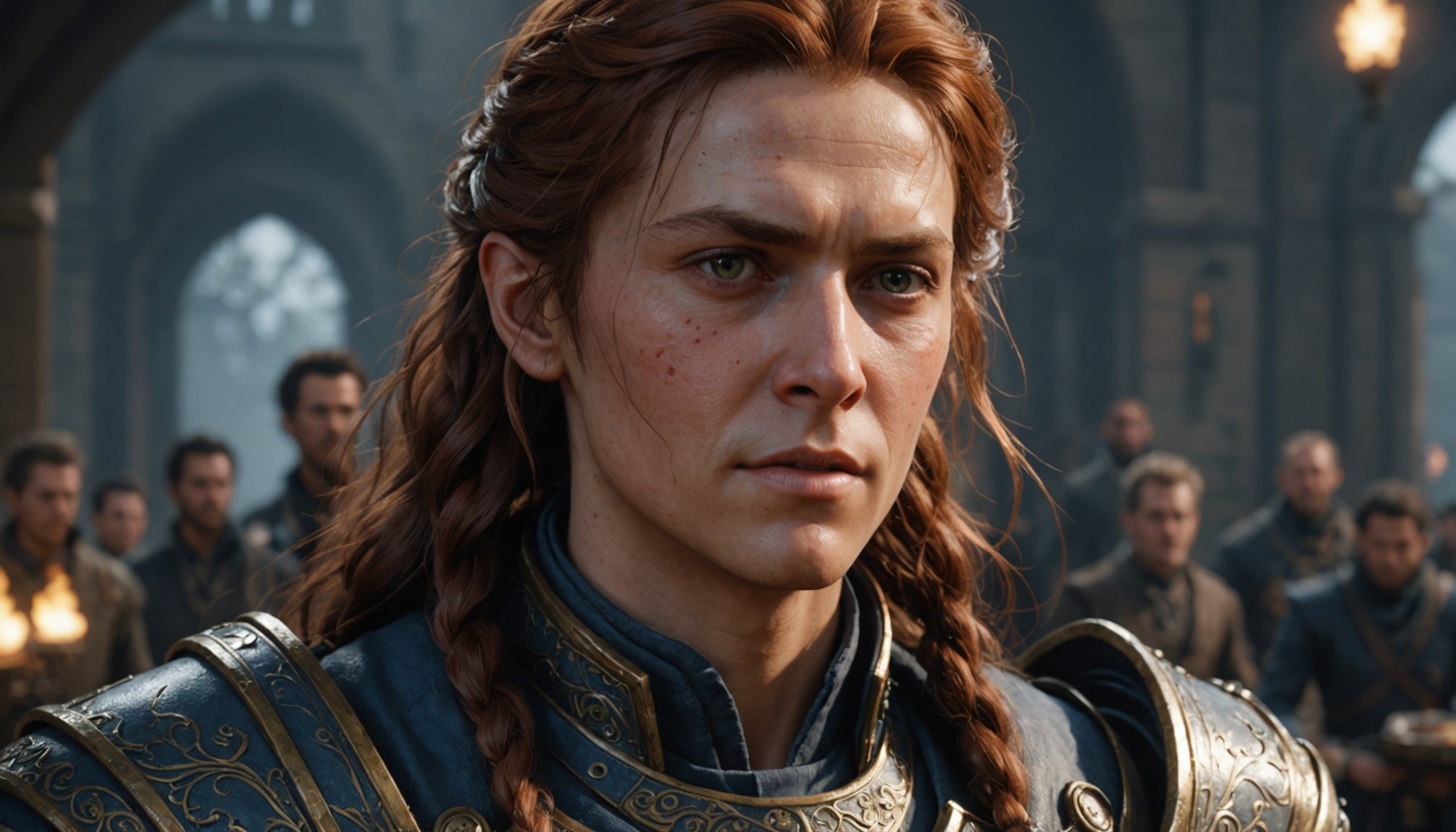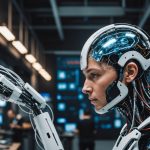Introduction to Machine Learning in Facial Animation
Facial animation in Role-Playing Games (RPGs) has evolved remarkably, largely due to advances in machine learning. The need for realistic character expressions in gaming is more significant than ever. Players demand immersive experiences where characters exhibit emotions that feel authentic, enhancing the narrative depth and player engagement.
In RPG development, facial animation is a crucial aspect that brings characters to life. Traditionally, creating these animations was a time-consuming task, often involving manual keyframing techniques. However, machine learning is transforming this field by automating and significantly improving the process. It can predict and generate a wide range of human expressions based on vast datasets, learning and replicating the subtleties of facial movements.
Also to discover : Elevating gameplay: enhancing survival game crafting systems with real-world physics for ultimate fun
Moreover, the importance of realism in character expressions cannot be overstated. Realistic facial animations contribute to a more engaging and believable gaming world. They can influence player’s emotional responses, making their game experience more memorable. As the technology in game development continues to evolve, developers increasingly integrate machine learning models to create more sophisticated and lifelike animations. This evolution marks a significant leap forward from traditional methods, setting a new standard for what can be achieved in the creative realm of RPGs.
Traditional vs. Modern Techniques in Facial Animation
Facial animation has evolved significantly from traditional methods to modern techniques, greatly impacting creative industries like game development. Traditionally, animators relied heavily on manual frame-by-frame animation or rotoscoping to capture human expressions. This labor-intensive process required considerable time and skill, resulting in longer production timelines.
Also to read : Enhancing gameplay with binaural sound: a developer”s blueprint for immersive horror experiences
With the advent of modern techniques, the landscape has transformed dramatically. One such breakthrough is motion capture technology, which captures an actor’s performance and digitally renders it into a character model. This has increased accuracy and efficiency, providing lifelike expressions rapidly.
Modern tools like procedural animation and artificial intelligence have further revolutionized facial animation by reducing manual input. They enable real-time adjustments and generate high-quality animations with minimal resources. Comparatively, these techniques have proven to be more effective and efficient than traditional methods.
In game development, the impact is profound. The integration of modern animation techniques has truncated development timelines, allowing for releases without compromising quality. Additionally, the improved expressiveness of characters enhances player engagement and experience. Ultimately, the shift from traditional to modern methods marks a significant evolution in the quality and time efficiency of animation production.
Innovative Machine Learning Techniques for Character Expressions
The world of gaming has seen a spectacular evolution with the incorporation of machine learning techniques into character expressions. With a suite of innovative algorithms, animating facial expressions in games has never been more precise, compelling, and dynamic.
To begin, consider some key machine learning algorithms pivotal to facial animation: Neural Networks, Support Vector Machines (SVMs), and Convolutional Neural Networks (CNNs). These algorithms revolutionize how character emotions are captured and portrayed, allowing for more innovation in gaming narratives.
Case studies highlight how games like “The Last of Us Part II” and “Cyberpunk 2077” employ these techniques to enhance character emotional depth. In “The Last of Us Part II,” for instance, the seamless transitions between different emotional states are driven by advanced neural networks that learn from a rich dataset of human expressions.
Using machine learning for character animation unveils benefits such as increased realism, more nuanced character interactions, and the ability to evoke a genuine emotional response from players. These advantages enable game developers to craft immersive experiences. Innovation is the future of character animation, promising gamers an ever-more engaging and lifelike virtual environment. With continuous advancements, the sky is truly the limit.
Tools and Frameworks for Implementing Machine Learning in RPGs
Integrating machine learning (ML) into Role-Playing Games (RPGs) can transform the player’s experience by creating dynamic and adaptive environments. A successful implementation relies heavily on selecting the appropriate tools and frameworks.
Popular Machine Learning Frameworks
TensorFlow and PyTorch are leading contenders when it comes to game development. TensorFlow offers a vast library of ML models and robust support for scalability. PyTorch, meanwhile, is celebrated for its dynamic computation graphs, making it more flexible and user-friendly for developers aiming to prototype rapidly. When choosing between these frameworks, consider the specific project needs—such as the complexity of data operations or the necessity for real-time updates.
Software Tools for Facial Animation
When it comes to facial animation, software solutions that leverage ML are indispensable. Tools like Facial Animation Suite offer features such as automated lip-syncing and emotion detection. Key points to evaluate include ease of use, compatibility with existing systems, and the fidelity of animations. While some tools provide high-level abstraction for quick results, others offer granular control for customisation, each with its own pros and cons.
Tutorial on Integrating Machine Learning in Facial Animations
To effectively integrate machine learning in RPG facial animations, a structured approach is crucial. By following detailed guides, developers can ensure seamless implementation. Best practices include thorough testing, frequent feedback loops, and utilising pre-trained models to reduce development time. Leveraging visual examples and code snippets can also demystify complex integration challenges.
Enhancing Player Immersion through Advanced Facial Animations
Engaging players in a game is a multifaceted effort, and one critical element is player immersion. Advanced animations, specifically realistic facial animations, have a substantial psychological impact on players. These animations bridge the gap between digital characters and human players, allowing for nuanced expressions that convey complex emotions. This emotional depth enhances the game experience, transforming it from mere play to an emotional journey.
One area where this shines is in RPGs (Role-Playing Games). Emotional responsiveness, achieved through lifelike facial animations, can significantly enhance storytelling. Characters express themselves more authentically, forging a deeper connection with players. This makes interactions more meaningful, allowing players to engage with the narrative on a personal level, thus elevating the overall game experience.
Looking ahead, future trends in facial animations will likely continue to push boundaries, with a focus on increasing realism and emotional expressiveness. These advancements will not only boost player immersion but also keep changing how stories in games are told and experienced. It’s an exciting progression that promises even more player engagement, with games that adapt and respond to player actions and emotions in ways previously unimaginable.
Challenges and Considerations for Developers
Implementing machine learning for animations is laden with development challenges that require careful navigation. One primary issue is the dependency on high-quality data, as poor or biased datasets can lead to inaccurate or biased animations, affecting the user experience.
Additionally, developers must grapple with the limitations of current technologies and algorithms. While machine learning shows promise, it still struggles with the complexity of human movements and emotions, often requiring extensive computational power and time to approximate reality.
Beyond technical constraints, ethical considerations are paramount. Developers must ensure that their models do not propagate biases present in training data, a common pitfall in machine learning applications. Practices such as regular audits and incorporating diverse datasets can mitigate these issues.
To address these challenges effectively, adopting best practices is crucial. This includes engaging in continuous model testing and validation, as well as staying updated with advancements in algorithmic techniques. By doing so, developers can enhance their animations while adhering to ethical standards, ultimately creating a better, more inclusive gaming experience.
These challenges require not only technological acumen but also a commitment to ethical responsibility within the evolving landscape of game development.











